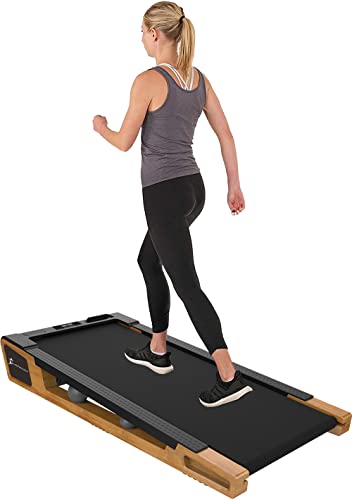15 Of The Top Treadmill Non Electric Bloggers You Should Follow
Treadmill Non-Electric: The Eco-Friendly Fitness Solution
In a period controlled by electric devices and modern gadgets, the humble non-electric treadmill stands out as a beacon of simpleness and performance. Frequently eclipsed by their high-tech counterparts, non-electric treadmills offer numerous advantages that cater to a sustainable lifestyle and a strong workout. This blog site post will check out the advantages, functionality, and variety of non-electric treadmills, making a strong case for their function in modern physical fitness regimens.
What is a Non-Electric Treadmill?
A non-electric treadmill, also referred to as a manual treadmill, runs without electric power. Instead, it depends on the user's energy to move the belt. This kind of treadmill normally has a curved or flat running surface area and a belt that moves as the user strolls or runs, consequently offering a full-body cardiovascular workout.
Secret Features of Non-Electric Treadmills
Feature
Description
Source of power
Manual operation (user-powered)
Design
Curved or flat treadmill surface area
Mobility
Generally light-weight and easy to move
Resilience
Fewer mechanical elements; typically made from top quality materials
Expense
Normally more budget friendly than electric treadmills
Footprint
Generally smaller, making them suitable for restricted areas
Noise Level
Quieter operation compared to electric versions
The Advantages of Non-Electric Treadmills
1. Eco-Friendly
Non-electric treadmills are a sustainable choice for physical fitness lovers. Without any electricity consumption, they decrease carbon footprints and overall energy usage.
2. Affordable
With fewer mechanical components and no wiring systems, non-electric treadmills are typically more affordable. This makes them accessible and appealing to individuals seeking to preserve a healthy way of life without breaking the bank.
3. Increased Workout Intensity
Because the user powers the belt, they have complete control over their workout's intensity. The more difficult you push, the more calories you burn. This self-powered feature encourages a more engaged workout, pressing limitations for a better fitness outcome.
4. Compact and Portable Design
A lot of non-electric treadmills have a lightweight construction and smaller sized footprint, making them easy to store and transportation. This feature permits users to integrate cardio workouts into various settings, whether at home, in the office, or at a health club.
5. Lower Maintenance
Non-electric treadmills have fewer moving parts than electric versions, which equates to reduce upkeep costs and less mechanical failures over time.
Kinds Of Non-Electric Treadmills
Non-electric treadmills been available in numerous designs to deal with varied physical fitness needs. Here's a short summary:
Type
Description
Curved Manual Treadmill
Functions a curved running surface area for a natural gait. Outstanding for sprinting and interval workouts.
Flat Manual Treadmill
A simple style similar to standard treadmills but powered by the user's motion.
Foldable Manual Treadmill
Compact style that can be easily folded and stored away when not in usage. Ideal for little living areas.
All-Terrain Manual Treadmill
Created for outdoor usage, these treadmills frequently feature a rugged build and traction control.
Often Asked Questions (FAQ)
1. Are non-electric treadmills appropriate for beginners?
Yes, non-electric treadmills can be suitable for beginners. Users can adjust the strength and speed of their exercises based on their fitness level.
2. Can I use a non-electric treadmill for running?
Definitely! Lots of non-electric treadmills, specifically curved designs, are created for running. Manual Treadmill For Home -powered nature enables users to engage in running or sprinting.
3. What kinds of workouts can I carry out on a non-electric treadmill?
Users can engage in numerous exercises, including walking, jogging, running, interval training, and even hill workouts by adjusting their position.
4. How do I maintain a non-electric treadmill?
Standard upkeep consists of frequently inspecting the belt for wear, ensuring it is focused, and cleaning up the surface area to prevent debris from affecting motion.
5. Are non-electric treadmills noisy?
Non-electric treadmills tend to be quieter than electric ones, as they do not have motors that can produce sound. Users might still create noise based upon their speed and weight.
Tips for Maximizing Your Non-Electric Treadmill Workouts
To get the most out of your non-electric treadmill sessions, think about the following tips:
Warm-Up Properly: Always start with a warm-up session to prepare your body for the exercise.
Incorporate Interval Training: Alternate between high-intensity sprints and moderate walking to boost calorie burn and improve endurance.
Focus on Form: Maintain proper posture and form while running to reduce the danger of injury.
Hydration is Key: Keep water close-by to stay hydrated during your exercises.
Track Your Progress: Use a fitness tracker or mobile phone to monitor your workout efficiency and development over time.
The non-electric treadmill stands out as an enduring, environment-friendly piece of exercise equipment that efficiently accommodates both beginners and seasoned fitness enthusiasts. With its wide variety of advantages, including cost-effectiveness, ease of usage, and portability, it provides a sustainable option in the developing fitness landscape. For those looking to streamline their exercises while accepting an active way of life, non-electric treadmills might be the best solution. It's time to redefine your workout experience far from the distractions of technology and toward the essentials that keep you fit and healthy!
